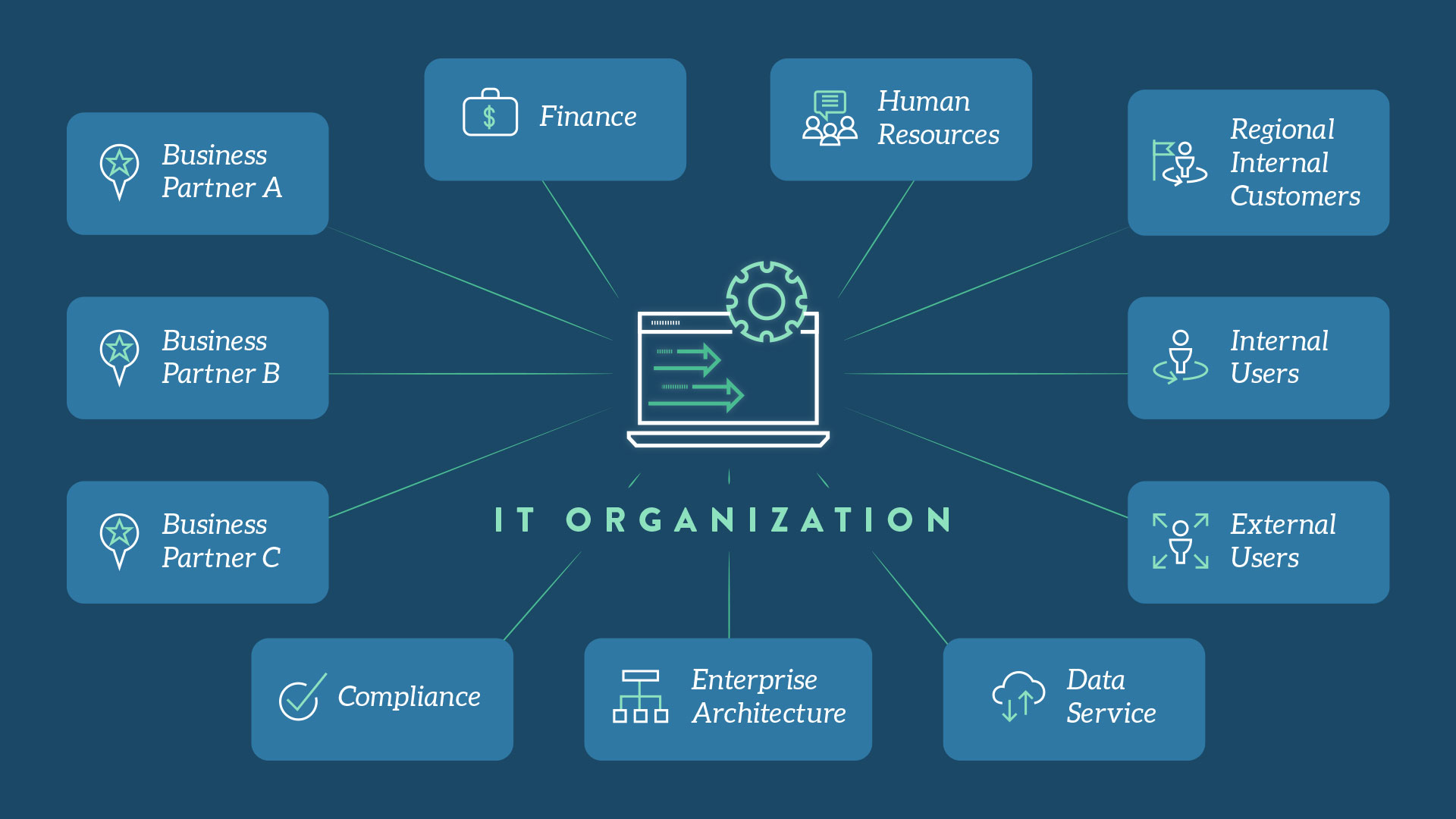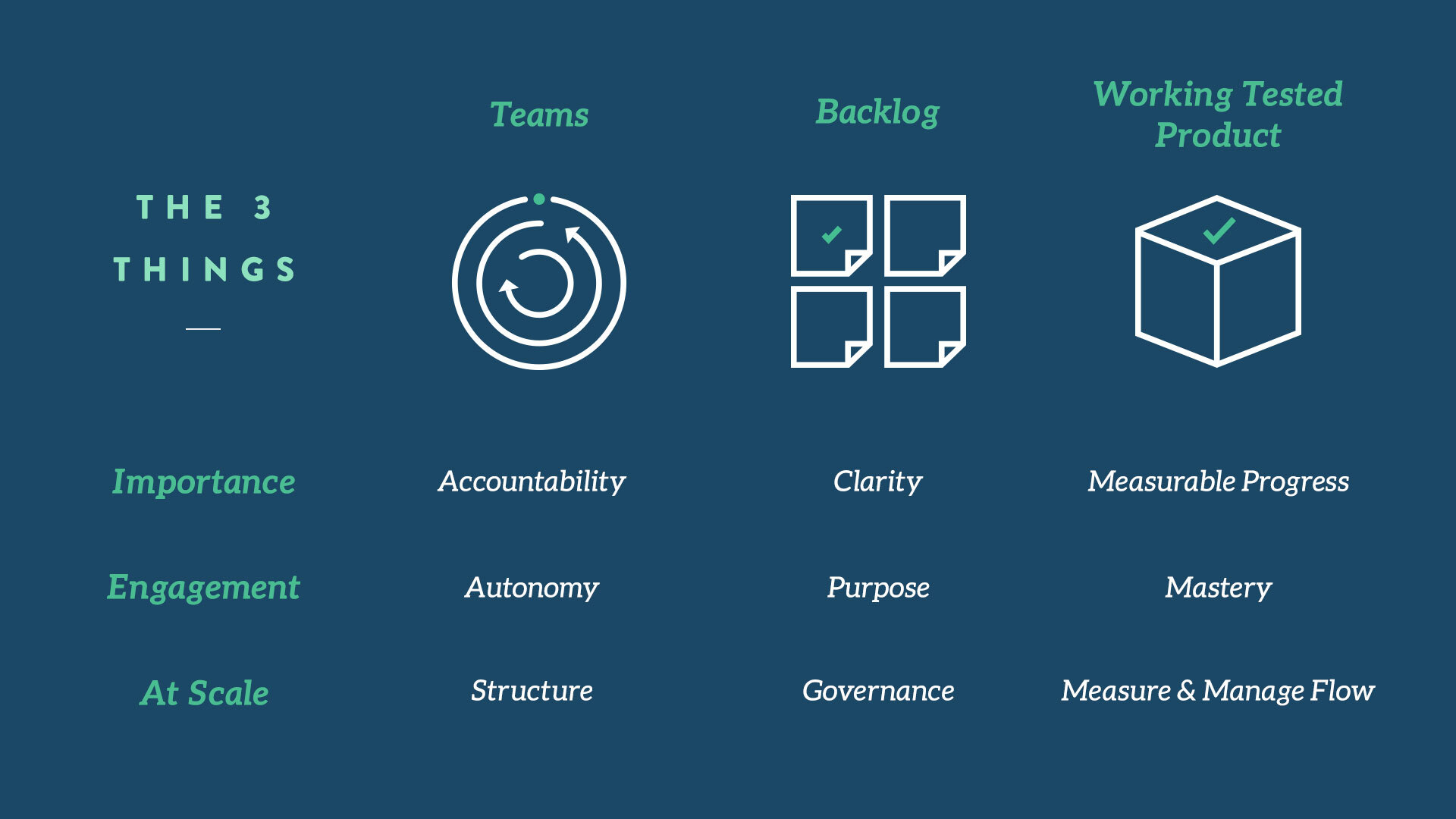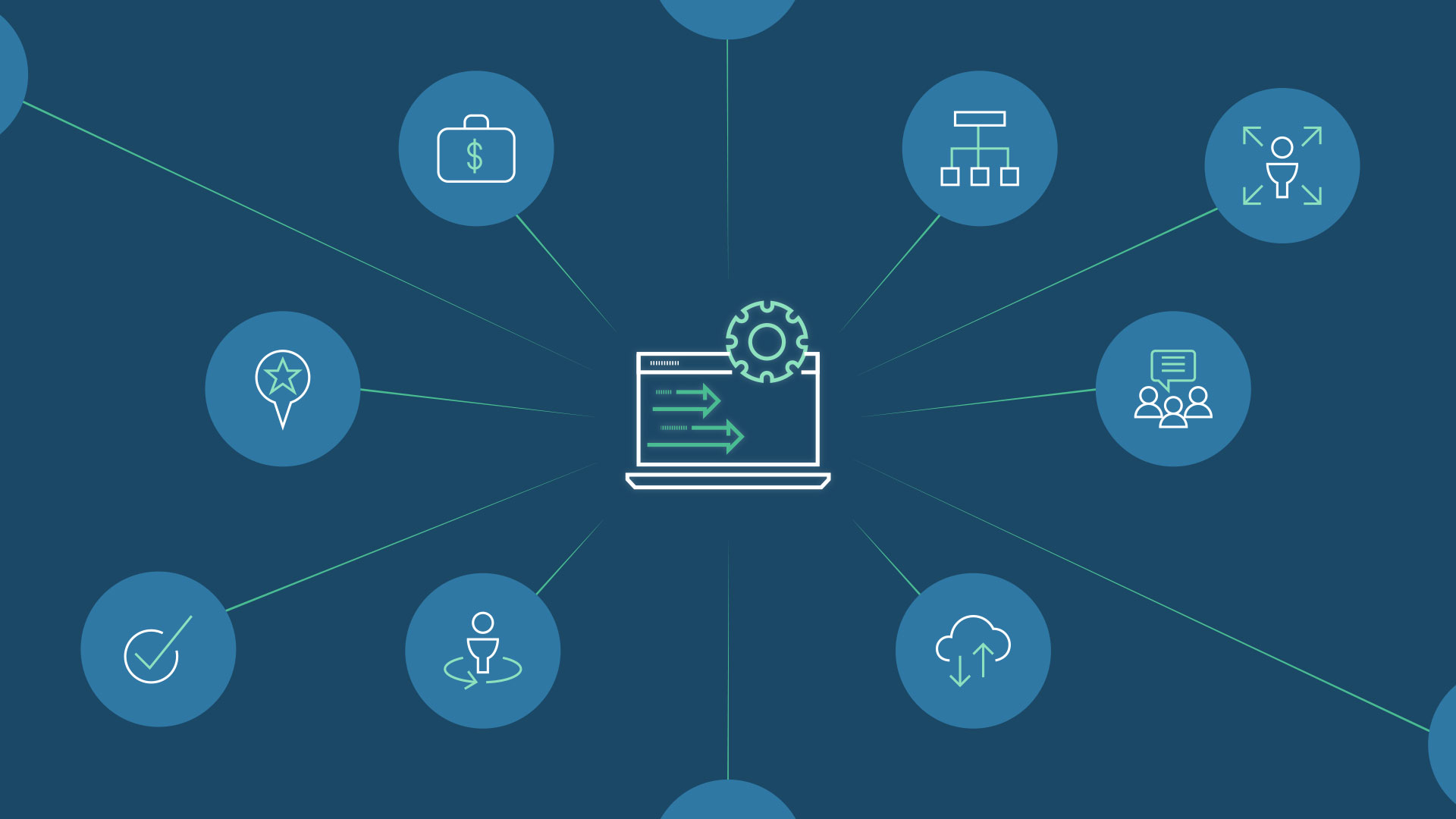Engaging Critical Internal Partners For Transformation Success
Our goal is to provide the LeadingAgile solution to engage critical internal partner leaders and stakeholders for Transformation success, sustained business outcomes, and value realization.
Building the Agile Ecosystem
Often Agile Transformations are introduced or initiated in client organizations through IT leadership (e.g., CIO, CTO). In some cases, LeadingAgile has collaborated with clients who have made previous attempts (sometimes several) to scale Agile, predominantly within and via their IT organizations. A key discovery is that scaled Agile Transformations are not solely limited to the IT entities leading the initiative. The Transformation and change required to stand up and sustain Agile Systems of Delivery also impacts internal partners outside of IT.
The level of the impact of a Transformation and the necessity for internal partners to adopt new systems, processes, roles, responsibilities, and practices falls on a spectrum from minimal to significant. However, where each internal partner lands on this spectrum must be assessed and clearly understood. This insight enables the tailoring and execution of right-sized strategies and plans to adopt and sustain Systems for Delivery, by all internal partner organizations and members touched by the Transformation.
The high-level organizational network map below provides a visual of potential internal partners (beyond IT) that will be impacted, to some extent, by a scaled Agile Transformation and adoption of new Systems of Delivery.
 As this image demonstrates, the IT organization exists within a larger ecosystem consisting of entities that are necessary to establish and sustain a System of Delivery that produces value for customers and achieves business outcomes. At varying levels, each internal partner will also be embarking on and participating in the Agile Transformation journey.
As this image demonstrates, the IT organization exists within a larger ecosystem consisting of entities that are necessary to establish and sustain a System of Delivery that produces value for customers and achieves business outcomes. At varying levels, each internal partner will also be embarking on and participating in the Agile Transformation journey.
The 3 Things: Teams, Backlogs & Working, Tested Product
The LeadingAgile System of Transformation is a framework and approach for collaborating with clients to envision, strategize, plan, implement, and complete journeys that stand-up Systems of Delivery across an enterprise to realize desired business outcomes. These outcomes can include measurable increases in predictability, quality, cost savings, return on investment, product fit, and innovation. The core and foundational elements of any System of Delivery are high-performing teams, clear prioritized backlogs, and consistent release of working, tested product. Teams, backlogs, and working tested product (i.e., The 3 Things) must scale to constitute the structure, governance, and metrics that define the design, flow of value, and performance measures of a System of Delivery.
 Successful Transformations require leadership stakeholders and System of Delivery members, regardless of the organization in which they reside, to understand and embrace the necessity to establish, sustain, scale, and continuously improve The 3 Things. As the primary initiators and leaders of a scaled Agile Transformation, IT executives and members are motivated and incentivized to make the needed investments to accomplish the objectives of standing up and scaling a System of Delivery on the foundation of The 3 Things. However, internal partner leaders and members outside the IT organization, may not see the value and, for various reasons, may perceive disincentives in achieving these objectives.
Successful Transformations require leadership stakeholders and System of Delivery members, regardless of the organization in which they reside, to understand and embrace the necessity to establish, sustain, scale, and continuously improve The 3 Things. As the primary initiators and leaders of a scaled Agile Transformation, IT executives and members are motivated and incentivized to make the needed investments to accomplish the objectives of standing up and scaling a System of Delivery on the foundation of The 3 Things. However, internal partner leaders and members outside the IT organization, may not see the value and, for various reasons, may perceive disincentives in achieving these objectives.
The Challenge
The reasons internal partners are resistant to fully engage and commit to an Agile Transformation vary depending upon respective goals and priorities. Finance and HR leaders, for example, will have different reasons than those maintained by leaders of business organizations, who are responsible for product strategy and portfolio.
Reasons often expressed by business leaders for why they are reluctant to commit to and invest in a scaled Agile transformation include:
- Desire to avoid delivery disruption of committed products to customers
- Perception that it is more advantageous to maintain the current arrangement with IT to meet business goals (e.g., IT is an “order taker,” expected to deliver specified products as promised)
- Thinking that in order to deliver on business goals, it is best to limit the number of inputs and points of influence on strategy and the related portfolio
- Belief that the new System of Delivery will require a commitment of additional staff resources and time
- Misunderstanding that Agile transformation is just “another IT initiative” (it is fine if IT wants new processes and practices if commitments are met and no change is required)
A common root cause for the reasons why business leaders are reluctant to support and invest in Agile Transformations is a lack of trust in the IT organization to predictably deliver quality products aligned with portfolio goals, priorities, and commitments.
It is important to work directly with the critical stakeholders of internal partners to understand and empathize with their points of view, priorities, and concerns to identify the root causes of their respective resistance. Proactively addressing the root causes will enable the development of the trust and influence needed to obtain and foster the commitment and support to stand up and sustain the new Systems of Delivery and achieve the transformation outcomes.
The Solution
The respective reasons and root causes of resistance must be assessed and understood. This information and knowledge are necessary to co-create strategies and plans to proactively address the root causes and to enroll and engage stakeholders of internal partners to actively support and invest in the transformation. Ultimately, the goal is to move these stakeholders to believe in and embrace The 3 Things and champion the new Systems of Delivery. This requires that these stakeholders can see measurable performance improvements and outcome achievement of the Systems for Delivery. Internal partner stakeholders must develop trust in the Systems of Delivery, which must be able to demonstrate themselves as trustworthy systems.
Woven into the fabric of the System of Transformation is a change model and specific actions to work with key stakeholders to fully embrace The 3 Things, reach alignment around outcomes, and overcome resistance to develop lasting trust in the Systems of Delivery. These actions include:
- Engage leadership stakeholders of critical internal partners in initial visioning and define-end-state work
- Obtain agreement on and commitment for transformation business outcomes
- Jointly determine the metrics of success aligned with outcomes and goals
- Define the organizational network of all internal partners touched by SoD and assess the level of impact on each partner, highlighting:
- Organizational goals and priorities
- Current level of alignment around transformation business outcome
- Key internal partner leaders and members, who must be enrolled as champions
- Critical shared dependencies within the value stream from strategy to execution
- Necessary changes to internal partner systems, processes, and roles in the new System of Delivery
- Co-create engagement strategies and execute plans with select leaders to target and enroll critical stakeholders to gain and foster their commitment and support
- Make System of Transformation and System of Delivery outcome achievement visible through regular review of metrics, including discussions to surface discoveries, impediments, and required actions
- Provide continued and direct coaching on The 3 Things and required investment and support to establish, scale, improve, and sustain the System of Delivery
This is not an exhaustive list. LeadingAgile collaborates with and supports client leaders in the above and other activities identified as necessary to enroll and engage critical partners and stakeholders. Through the System of Transformation, our consultants work directly with leaders to tailor and implement comprehensive solutions to ensure internal partners embrace The 3 Things, trust the Systems of Delivery, and establish the required ownership and accountability for Transformation success, sustained business outcomes, and value realization.


